Japanese American Women and Activism Within the JA Community: Redress, Reparations, and Gender

|
||
| Licensing | ||
Japanese American women, Issei through Sansei, are often taught values that identify very closely with their culture; in general, it is best to not question authority and do as you are told. Growing up, young girls are taught by their families to observe certain ascribed gender roles that involved taking care of family and becoming more domesticated. As a result, they are very rarely thrust into a limelight-filled life of activism and politics, and if they do participate in such activities, stay in the background completing all the “behind the scenes” tasks. It is the men, then, that are at the forefront of particular issues and receive much of the credit. For the Redress and Reparations movement, however, in looking at available sources to analyze the contributions Japanese American women have played, it becomes clear that without their hard work, dedication, perseverance, and leadership, the campaign would not have been anywhere near successful. Although it is names like Dale Minami, Fred Korematsu, Gordon Hirabayashi, and Minoru Yasui that are well-known, the question has to be asked – what about our women? Where is their recognition?
This project ventures on the topic of women’s roles in the Japanese American community, and, in looking at the lives and times of Nisei women Tsuyako “Sox” Kitashima, Aiko Yoshinaga-Herzig, Cherry Kinoshita, and finally Lorraine Bannai, who is a Sansei, seeks to more closely analyze the role of gender in their work, and question why it is that these women have not received more recognition for their accomplishments. Through this analysis, it becomes clear that for these particular women, family and culture were important. For Sox, Aiko, Cherry and Lorraine, although each had very different experiences in how their lives played out, each woman, with strong values and connections to the cultural traditions and ethics taught to them by their families, also were imbued with an internal strength that led them to seek out involvement in social justice issues, in matters that were larger than themselves. The work that they carried out both in their lives and in the Redress and Reparations movement operated most often under men and these women did not take leading roles as officers or spokespeople of the movement, nor were they aware of the gender roles that played out in this campaign.
However, in light of their gender, each woman overcame enormous adversity, both political and personal, to selflessly devote themselves to a community cause that ultimately, although male-dominated, was female-run. Whether they knew it or not, these four women are but a few of the strong, empowered Japanese American women who, while carrying with them with the influences of family-oriented Japanese tradition and culture, were able to contribute to and achieve incredible things for the Japanese American community as a whole. Here are their stories, and hopefully, finally the recognition that is so long overdue.
(Please view original items for full text and explanations, as those are my own.)
Slides in this album |
|
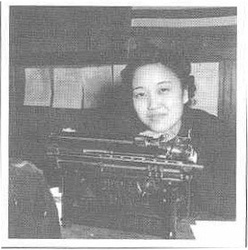
|
Tsuyako "Sox" Kitashima, IntroductionTsuyako Kitashima, nicknamed “Sox” to make pronunciation of her name easier, was interned with her sister at Topaz during the war. She was very close to her family, especially after her father’s death, and decided to stay with her sister in Topaz while her mother and other siblings were transported … |
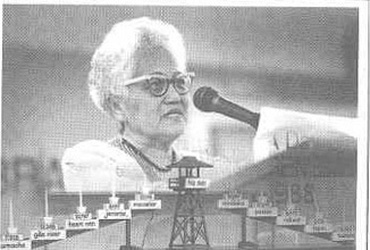
|
Tsuyako "Sox" Kitashima - Her workFrom 1980-1989, Tsuyako Sox Kitashima became heavily invested in the campaign for Redress and Reparations through her membership in NCRR and later, JACL. Thanks to lessons from her father that taught her to become involved in community activity (27), Sox saw the importance of involving herself in this issue. In … |
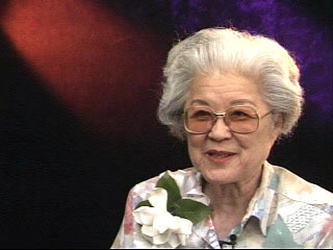
|
Aiko Yoshinaga Herzig, IntroductionAiko Yoshinaga Herzig is most well known for her archiving work during the Redress and Reparations movement of the 1980s. Interned at the Manzanar Incarceration Camp during World War II, Aiko spent a few years there, fully experiencing the positives and negatives and dangers of camp life. Many years later … |
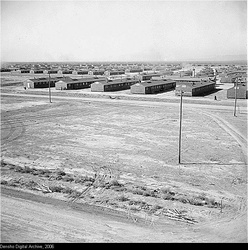
|
Sox Kitashima - Internment at TopazFollowing the December 7, 1941 bombing of Pearl Harbor, Sox Kitashima recalls her mother saying, “This is terrible!” in Japanese (33). This reaction is indicative of her family’s awareness that Japan declaring war on the United States would have a dire effect on the Japanese American community. As Sox recalls, … |
|
|
Aiko Yoshinaga Herzig on the coram nobis cases; Lorraine Bannai and Korematsu v. United StatesAiko Yoshinaga Herzig, in an interview with Densho, commented on the importance of the coram nobis cases to passage of the Redress bill. The coram nobis cases consisted of three cases brought by Fred Korematsu, Gordon Hirabayashi, and Minoru Yasui during World War II to challenge the constitutionality of convictions …
Aiko Yoshinaga Herzig on the coram nobis cases; Lorraine Bannai and Korematsu v. United States |

|
Cherry Kinoshita, IntroductionCherry Kinoshita was born and raised in Seattle, Washington, and from a very young age took interest in involving herself in leadership-type activities. It started with being president of various organizations in elementary through high school and starting up a newsletter in middle school, then bloomed into involvement with the … |

|
Cherry Kinoshita - Internment at MinidokaFollowing the bombing of Pearl Harbor and the subsequent signing of Executive Order 9066, Cherry Kinoshita and her family were faced with very difficult circumstances. Like hundreds of thousands of Japanese Americans on the mainland, their lives had changed in a matter of minutes. Her family was questioned by the … |

|
Overview: Gender Roles within the Japanese American Community – an AnalysisShown above is a photo of women carrying out domestic work (i.e. laundry, cooking) at the Minidoka concentration camp in 1943, where Cherry Kinoshita was interned. Analysis of the Japanese American experience starting from the Issei reveals the kinds of gender roles that were ascribed from the very beginning to …
Overview: Gender Roles within the Japanese American Community – an Analysis |

|
Civil Liberties Act of 1988 - Victory!When President Ronald Reagan signed the Civil Liberties Act of 1988 on August 10th, it marked a day of victory, finally, for the Japanese American community and all those who had been so invested in the Redress and Reparations campaign. The hours and hours of work everyone had contributed were … |
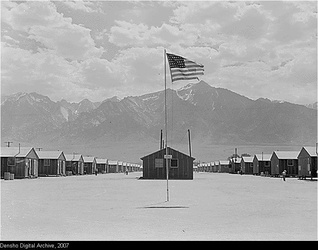
|
Aiko Yoshinaga Herzig - Internment at ManzanarAiko Yoshinaga Herzig and her husband were interned at Manzanar, pictured above, during World War II. This photo beautifully photographed by Ansel Adams captures the scenery of the camp. But such a place holds painful memories for Japanese American internees. In recalling the terrible conditions of camp life, Aiko discussed …
Aiko Yoshinaga Herzig - Internment at Manzanar |
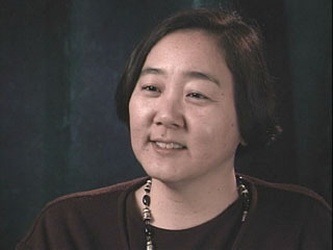
|
Lorraine Bannai, IntroductionAs a Sansei born in Gardena, California in 1955, Lorraine Bannai had a somewhat different experience in the Redress and Reparations movement. Too young to have experienced the camps, Lorraine became aware of Japanese American history both through her family, and her experiences in school. She had a keen consciousness … |
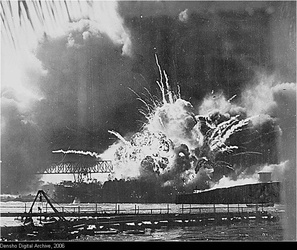
|
The "Day of Infamy" - a Turning Point for these WomenDecember 7, 1941 - Japan attacks Pearl Harbor. This was the beginning of World War II for United States against the Japanese, and marked the beginning of a long struggle for the Japanese American community. For Sox, Aiko, and Cherry - each of them had an experience following the bombing …
The "Day of Infamy" - a Turning Point for these Women |

|
The Beginnings of Activism: Influences and InspirationsDuring the late 1960s and 1970s, America was experiencing a time of enormous social change and upheaval. The Vietnam War, Civil Rights Movement, the rise of Black Power, and other revolutionary occurrences were changing the way people thought about race, gender, sexuality, political freedom, and civil liberties. Aiko Yoshinaga Herzig …
The Beginnings of Activism: Influences and Inspirations |
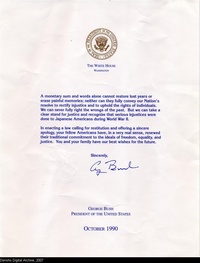
|
Official Apology from the United States GovernmentIn October of 1990, George Bush signed this official apology to the Japanese American internees and their families for the pain and hardship they had suffered during and after World War II due to Internment. This apology followed the signing of the Civil Liberties Act of 1988, the marked …
Official Apology from the United States Government |
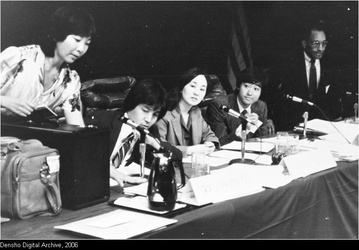
|
Redress HearingsThe Redress hearings put on by the Commission on Wartime Relocation and Internment of Civilians (CWRIC) created by President Jimmy Carter were a chance for internees to appeal to the government-appointed entity and have the looming issues of Internment and Redress be remedied accordingly. As both Sox Kitashima and Cherry …
Redress Hearings |

|
Official Apology from the United States GovernmentIn October of 1990, George Bush signed this official apology to the Japanese American internees and their families for the pain and hardship they had suffered during and after World War II due to Internment. This apology followed the signing of the Civil Liberties Act of 1988, the marked …
Official Apology from the United States Government |
|
|
Cherry Kinoshita receives Jefferson AwardThis article features Cherry Kinoshita in the Seattle Post-Intelligencer Reporter, as she is awarded for her efforts in the Redress and Reparations movement. As recognition for the significant work that she carried out in making the acquisition of justice a reality for the Japanese American community, this is proof that … |

|
Notice of RelocationThis was the notice posted all over the West Coast preceding the immediate removal of over 110,000 Japanese Americans from their homes and into internment camps. They had only a few weeks to pack what they could carry, most often in one or two suitcases, and find a way to …
Notice of Relocation |
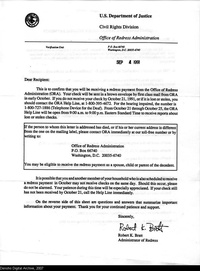
|
Redress Confirmation LetterWhen Japanese Americans who were eligible applied for redress, they received this letter of confirmation from the Office of Redress Administration (ORA), which was in charge of all matters pertaining to the application process for payment. Sox Kitashima, for one, was a volunteer who regularly helped eligible former internees or … |
 cshikai
cshikai
 Japanese American Women and Activism Within the JA Community: Redress, Reparations, and Gender
Japanese American Women and Activism Within the JA Community: Redress, Reparations, and Gender
 Journal feed
Journal feed
